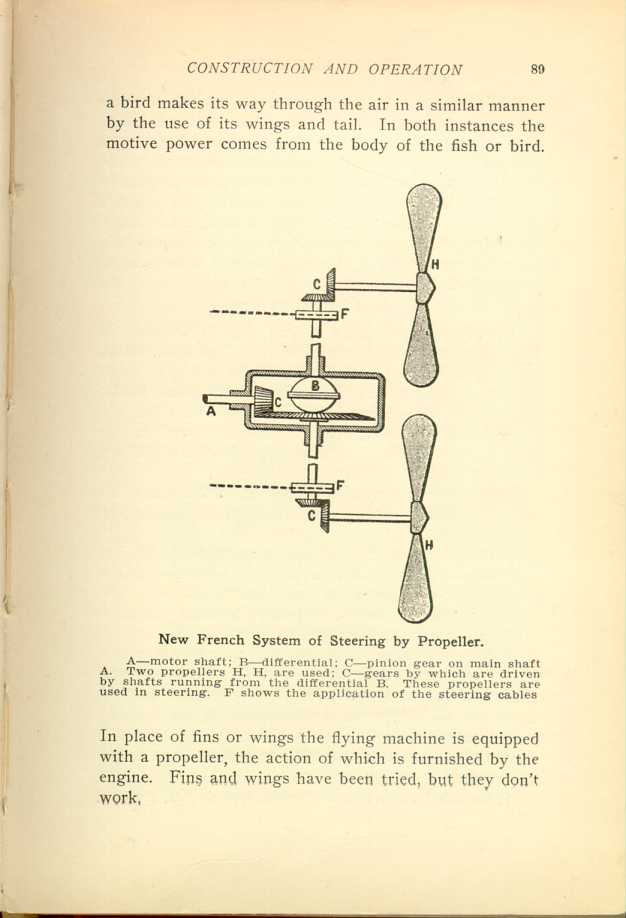| CHAPTER IX.
SELECTION OF THE MOTOR. Flying Machines: Construction and Operation: A Practical Book Which Shows, in Illustrations, Working Plans and Text, How to Build and Navigate the Modern Airship. | ||
What the Propeller Does.
Much of the efficiency of the motor is due to the form and gearing of the propeller. Here again, as in other vital parts of flying-machine mechanism, we have a wide divergence of opinion as to the best form. A fish makes progress through the water by using its fins and tail;

New French System of Steering by Propeller.
A—motor shaft; B—differential; C—pinion gear on main shaft A. Two
propellers H, H, are used; C—gears by which are driven by shafts
running from the differential B. These propellers are used in steering.
F shows the application of the steering cables
[Description: Black and white illustration: Diagram showing two propellers
and steering device.]
While operating on the same general principle, aerial propellers are much larger than those used on boats. This is because the boat propeller has a denser, more substantial medium to work in (water), and consequently can get a better "hold," and produce more propulsive force than one of the same size revolving in the air. This necessitates the aerial propellers being much larger than those employed for marine purposes. Up to this point all aviators agree, but as to the best form most of them differ.
| CHAPTER IX.
SELECTION OF THE MOTOR. Flying Machines: Construction and Operation: A Practical Book Which Shows, in Illustrations, Working Plans and Text, How to Build and Navigate the Modern Airship. | ||